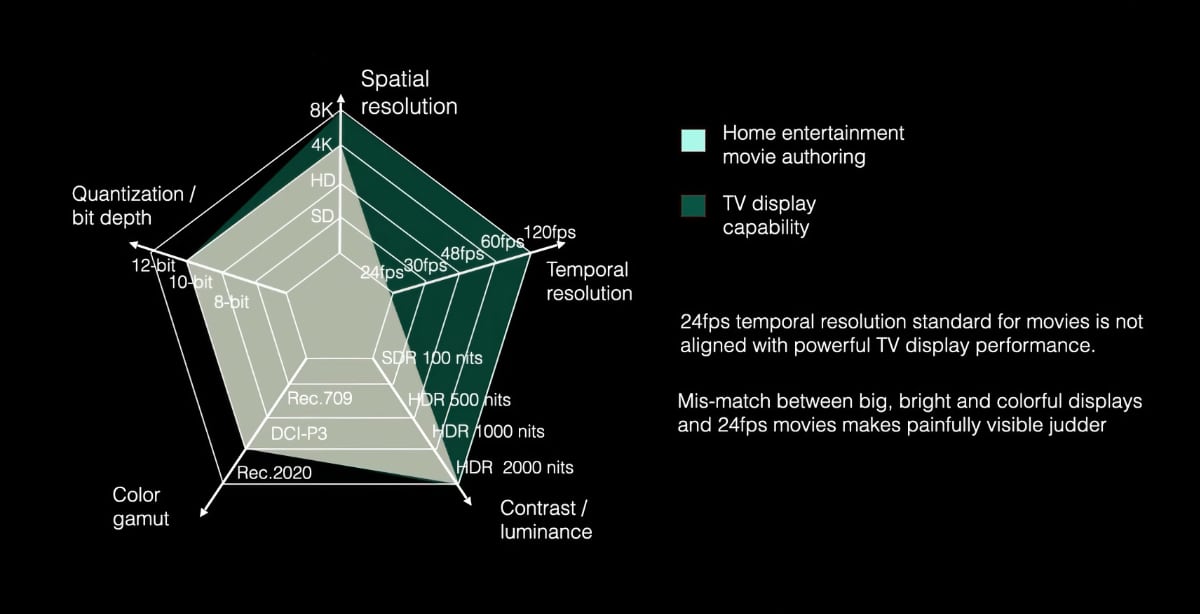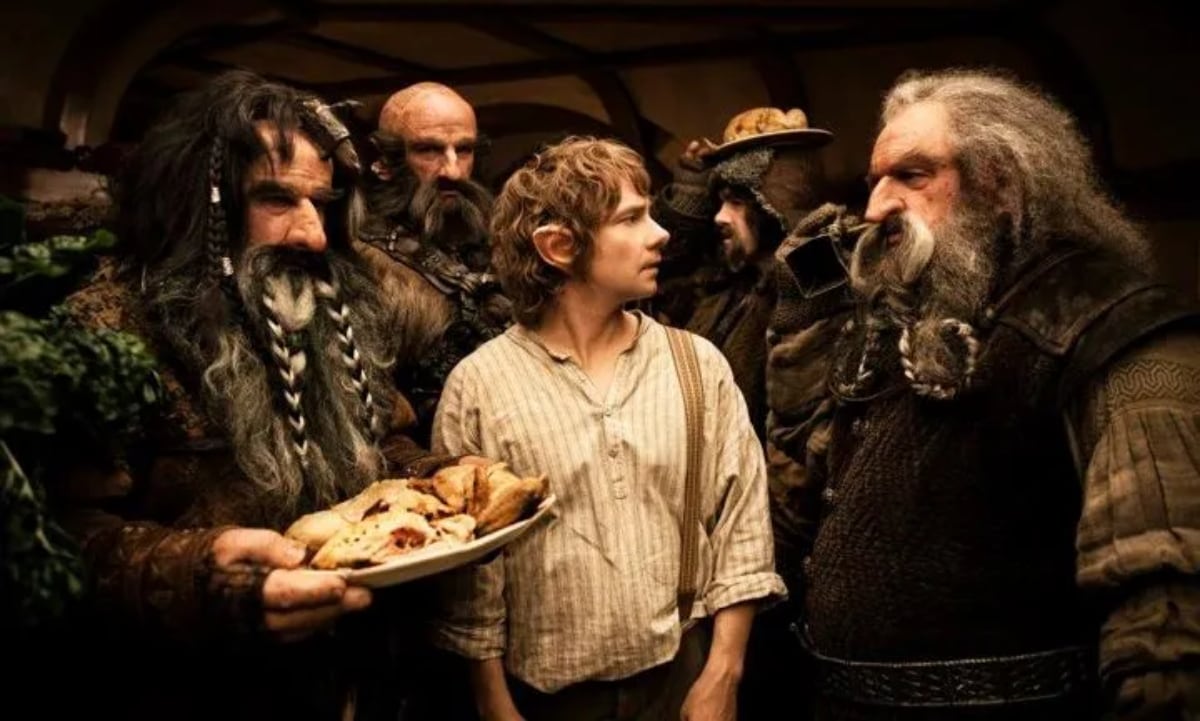Avatar: The Way of Water is one of only a few movies made in 48fps High Frame Rate, but do modern 4K and 8K TVs support this theatrical format? FlatpanelsHD investigated.
Almost all movies and series are still shot at 24 frames per second (fps), a format dating back to the late 1920s, originally chosen to synchronize sound with film for dim projectors in theaters.
24fps is too low for 4K, too low for HDR, too low for modern TVs like OLED, and often too low even for creative intent. It is the one aspect of video quality that has not evolved alongside advancements in resolution, color, contrast and brightness.
Also read: Why 24fps is not enough for HDR movies

Source: Pixelworks
Movies in HFR
Given these limitations, it is no surprise that visual effects pioneers like Douglas Trumbull and directors like Peter Jackson, Ang Lee and James Cameron have explored high frame rate (HFR) in movies such as The Hobbit, Billy Lynn's Long Halftime Walk, Gemini Man and Avatar: The Way of Water.
Also read: HFR – The one UHD technology you rarely hear about
While The Hobbit (48fps), Billy Lynn's Long Halftime Walk (120fps) and Gemini Man (120fps) faced criticism for looking like home video, viewers seemed more receptive to Avatar: The Way of Water (48fps). It introduced a new "motion grading" technique called TrueCut, akin to color grading but for motion.
Yet, none of these movies are available at home in their original frame rates. Billy Lynn's Long Halftime Walk and Gemini Man are on UHD Blu-ray in 60fps, while The Hobbit and Avatar: The Way of Water exist only in 24fps versions – except on Apple Vision Pro, which exclusively offers Avatar: The Way of Water in 48fps HFR.
Why is that?
24, 25, 30, 50, 60... 48fps
Delivering movies in 60fps is relatively straightforward due to its legacy in the NTSC standard in the US. This is why we have 60Hz and 120Hz TVs (or 50Hz and 100Hz in PAL regions).
However, 48fps is more challenging. Despite being an exact 2x multiple of 24fps, which already presents a number of challenges with 3:2 pulldown (NTSC) and speed-up to 25fps (PAL), the rarity of movies in 48fps means that support has not been prioritized by TV makers and content distributors.
For example, UHD Blu-ray supports 24, 25, 30, 50 and 60fps, both integer and fractional, but omits 48fps (plus 3D 4K and 120fps). Broadcast standards do not accommodate 48Hz either.

The Hobbit was shown in 48fps in theaters, but it has never been released in 48fps on any home entertainment format. Photo: Warner Bros
HDMI 2.1 comes into the picture
This raises the question of whether 48Hz is supported in modern TVs, something FlatpanelsHD writer Yoeri Geutskens and I began exploring after hearing about TrueCut and Avatar: The Way of Water in 48fps HFR on Apple Vision Pro.
The answer is: Yes, no, it depends.
First, it's important to differentiate between 48Hz input and 48Hz refresh in TVs. For example, a 60Hz 4K TV like LG's A-series OLED has a 48Hz refresh mode for native playback of 24fps content, but the HDMI port does not accept a 48Hz input signal.
It turns out 48Hz is not supported in HDMI 2.0.
In 2016, the Consumer Technology Association (CTA) ratified the CTA-861-G specification, which for the first time specified support for 48Hz, specifically 720p48, 1080p48, 2160p48 and 4320p48, as well as 3D formats like 720p2x48, 1080p2x48, 2160p2x48 and 4320p2x48, with both fractional (47.96Hz) and integer (48Hz) refresh rates.
As pointed out to FlatpanelsHD by the CTA and Dolby, CTA-861-G was adopted into the HDMI 2.1 specification, meaning that HDMI 2.1 for the first time in a standardized manner made it possible to support 48Hz over HDMI in TVs, media players, game consoles etc.
However, HDMI 2.1 does not mandate 48Hz support, leaving it up to the individual manufacturer to implement it.
Support for 48Hz in TVs
Over the past year, FlatpanelsHD has tested 48Hz support in major TV brands as part of our TV reviews. While results are not yet finalized, we can confirm that several popular models support 48Hz input.
As long as 48fps content remains unavailable, it is not so important, but this is expected to change in the future.
Support is also needed at the player level. Although the UHD Blu-ray specification is unlikely to be updated to support 48Hz, streaming media and apps embedded in Smart TVs could bypass HDMI challenges and quite easily support 48Hz refresh, provided the TV supports it.
To enable 48Hz in streaming apps on devices such as Apple TV 4K, Google TV Streamer and Nvidia Shield, manufacturers must add HDMI 2.1 and implement 48Hz support. We urge them to do so!
Let's see what 2025 brings.


